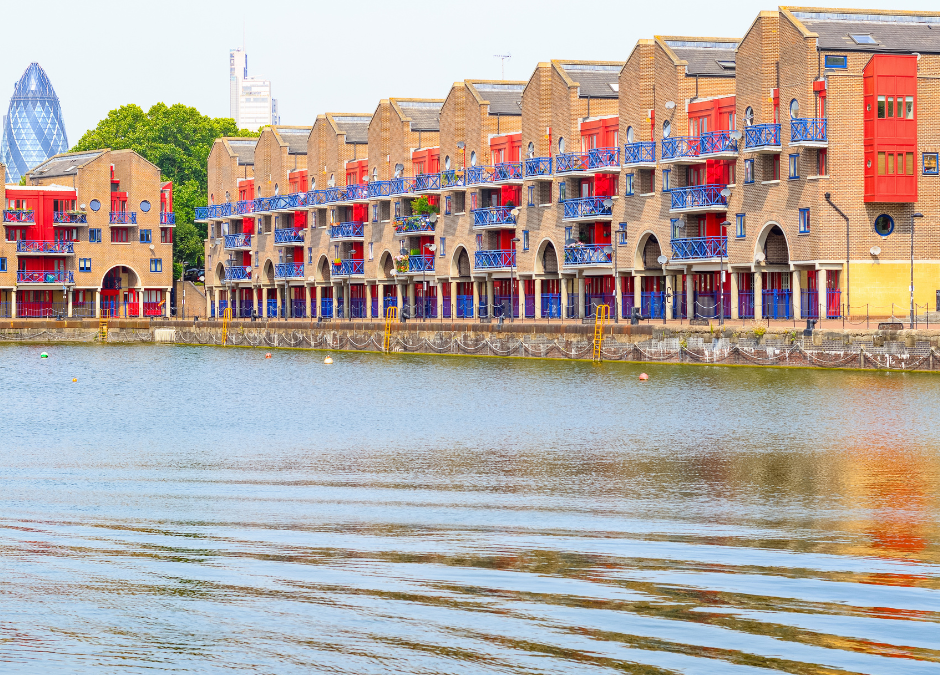With the decline of traditional docks, many UK towns have revitalised their waterfronts, transforming abandoned wharfs and warehouses into modern homes or building new developments on the water’s edge. But are these properties a smart buy?
The Positives
- Serenity:
Many buyers choose waterside homes hoping for a peaceful lifestyle. However, in popular and rapidly developing areas like Newcastle Quayside or Hartlepool Mariina Waterfronts, the surroundings can be quite lively and bustling. Still, having water on at least one side of your property provides a sense of privacy that is hard to find elsewhere.
- Picturesque Surroundings:
Instead of looking onto a road or someone else’s home, you will enjoy a beautiful, unobstructed view of the water that many would find enviable.
- A More Active and Balanced Life:
Owning a waterfront property places you close to a variety of sporting activities sailing, yachting, fishing, and more, making it convenient to explore new hobbies or join clubs. Additionally, these areas tend to enjoy cleaner air, benefiting from reduced traffic flow.
- The Economic Perspective:
Many waterfront homes are highly sought after and tend to retain their value better over time, providing a strong investment when you eventually decide to sell. Additionally, residents often benefit from reduced or waived fees that visitors face, such as marina charges and parking costs.
- Spaciousness:
Warehouse conversions typically offer more interior space compared to other property types.
- Distinctive Features:
If the conversion of an existing building has been handled with care, it often retains charming features like exposed beams and brickwork—details that many buyers find highly attractive.
- Stress-Free Living:
Waterfront properties built recently should meet top health and safety requirements and come with all the latest conveniences, meaning you can enjoy your new home from day one without needing to make any major improvements.
The Negatives
- Initial Market Value:
Research shows that homes overlooking the water can sell for as much as 50% more than similar properties without a waterfront view.
- Insurance Fees:
Properties situated beside certain types of water may be considered more flood-prone by insurance companies, which can drive up premiums.
- Intensive Property Management:
Additionally, the interiors of these homes can be at risk from these elements.
- Increased moisture, humidity, and damp conditions commonly result in higher insurance premiums, while waterfront homes may also face greater risks from wind damage. The interiors can likewise be affected by these factors.
- Unwanted Insects:
Do not forget about the insects that love watery areas, they can sometimes be a real headache for homeowners.
- Access Limitations:
Access to the property may include routes that are water-only, with no roads. If the location is a well-known tourist destination or features an active nightlife, this could lead to increased traffic during times you might prefer quiet. Always assess traffic levels at various times of day and throughout the year.
- Higher Monthly Utilities:
If your home is a converted warehouse, be prepared for higher utility bills since large, open spaces often require more energy to heat and light effectively.
- Historic Listing:
You need to find out if the conversion is in a period building. If it is listed, your ability to make changes will be heavily restricted. Also, conservation area status can place further limits on what you are allowed to do.
- Reduced Living Area:
Unlike some conversions, new builds can sometimes feel a bit smaller and might not have the same charm or distinctive features.
Get in Touch.
At S Jones Surveying, we offer detailed and neutral building surveys feel free to reach out to us anytime for assistance.

